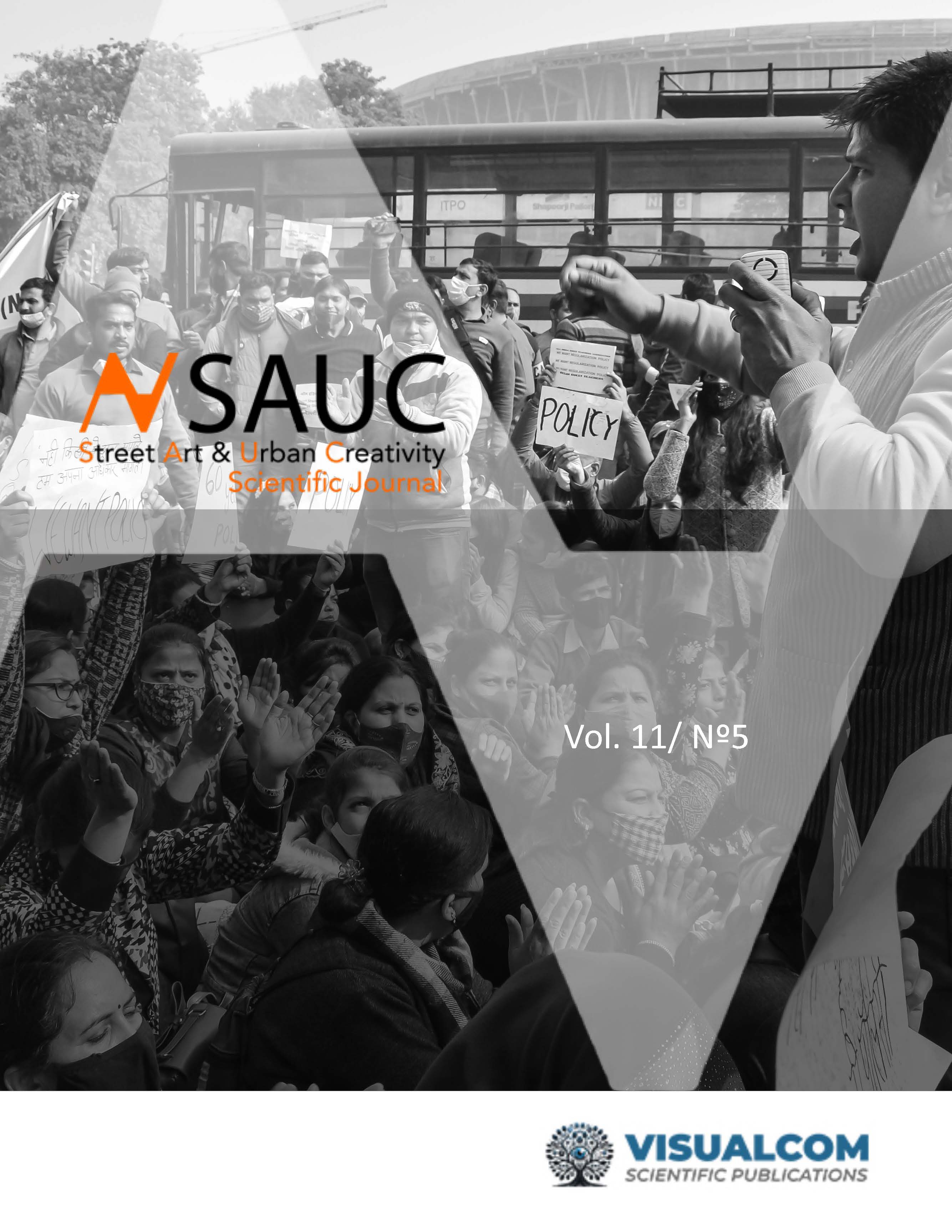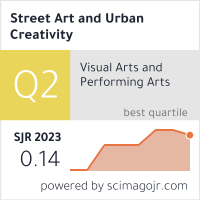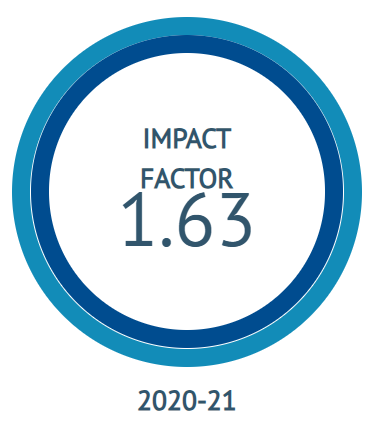Revisión sobre la evidencia psicológica y neuronal de la teoría del Valle Inquietante
DOI:
https://doi.org/10.62161/sauc.v11.5838Palabras clave:
Valle Inquietante, Respuesta emocional, Neuroimagen, Percepción, Rostro humano, Inteligencia artificialResumen
El artículo revisa la evidencia psicológica y neuronal sobre la teoría del Valle Inquietante propuesta por Masahiro Mori en 1970. Esta teoría sugiere que la afinidad hacia los robots aumenta con su realismo hasta cierto punto, donde la respuesta emocional se vuelve negativa. Estudios basados en neuroimagen confirman que este fenómeno surge de conflictos en el procesamiento cerebral de la percepción. El avance en tecnologías ha permitido crear robots y personajes animados más realistas, redefiniendo nuestra relación con la tecnología. El estudio se enfoca en la importancia del rostro humano como estímulo clave en la identificación social, un tema relevante ante el desarrollo de la inteligencia artificial generativa de imágenes, que requiere mayor precisión en la captura de características humanas. La forma en que manejemos este fenómeno influirá en el futuro de nuestra relación con la tecnología.
Descargas
Estadísticas globales ℹ️
|
790
Visualizaciones
|
332
Descargas
|
|
1122
Total
|
|
Citas
Bagdasarian, M. T., Hilsmann, A., Eisert, P., Curio, G., Müller, K. R., Wiegand, T., & Bosse, S. (2020, May). EEG-based assessment of perceived realness in stylized face images. Twelfth international Conference on Quality of multimedia experience (QoMEX) (pp. 1-4). IEEE.
Cavanagh, P. (2005). The artist as neuroscientist. Nature, 434(7031), 301-307, https://doi.org/10.1038/434301a
Cha, H. S., Chang, W. D., Shin, Y. S., Jang, D. P., & Im, C. H. (2015). EEG-based neurocinematics: challenges and prospects. Brain-Computer Interfaces, 2(4), 186-192. https://doi.org/10.1080/2326263X.2015.1099091
Cheetham, M., Suter, P., & Jäncke, L. (2011). The human likeness dimension of the «uncanny valley hypothesis»: behavioral and functional MRI findings. Frontiers in human neuroscience, 5, 126. https://doi.org/10.3389/fnhum.2011.00126
Cheetham, M., & Jancke, L. (2013). Perceptual and category processing of the uncanny valley hypothesis' dimension of human likeness: some methodological issues. Journal of visualized experiments: JoVE, (76), 4375. https://doi.org/10.3791/4375
Chen, J., Zhang, G., Chiou, W., Laidlaw, D. H., & Auchus, A. P. (2020). Measuring the Effects of Scalar and Spherical Colormaps on Ensembles of DMRI Tubes. IEEE Transactions on Visualization and Computer Graphics, 26(9), 2818–2833. https://doi.org/10.1109/TVCG.2019.2898438
Chen, Y., Stephani, T., Bagdasarian, M. T., Hilsmann, A., Eisert, P., Villringer, A., Bosse, S., Gaebler, M., & Nikulin, V. V. (2024). Realness of face images can be decoded from non-linear modulation of EEG responses. Scientific Reports, 14(1). https://doi.org/10.1038/s41598-024-56130-1
de Borst, A. W., & de Gelder, B. (2015). Is it the real deal? Perception of virtual characters versus humans: an affective cognitive neuroscience perspective. Frontiers in psychology, 6, 576. https://doi.org/10.3389/fpsyg.2015.00576
Diel, A., & Lewis, M. (2024). Rethinking the uncanny valley as a moderated linear function: Perceptual specialization increases the uncanniness of facial distortions. Computers in Human Behavior, 157, 108254. https://doi.org/10.1016/j.chb.2024.108254
Duchaine, B., & Yovel, G. (2015). A revised neural framework for face processing. Annual review of vision science, 1(1), 393-416. https://doi.org/10.1146/annurev-vision-082114-035518
Geller, T. (2008). Overcoming the uncanny valley. IEEE computer graphics and applications, 28(4), 11-17. https://doi.org/10.1109/MCG.2008.79
Ghazanfar, A. A., & Shepherd, S. V. (2011). Monkeys at the movies: what evolutionary cinematics tells us about film. Projections, 5(2), 1-25. https://doi.org/10.3167/proj.2011.050202
Igaue, T., & Hayashi, R. (2023). Signatures of the uncanny valley effect in an artificial neural network. Computers in Human Behavior, 146, 107811. https://doi.org/10.1016/j.chb.2023.107811
Kätsyri, J., Förger, K., Mäkäräinen, M., & Takala, T. (2015). A review of empirical evidence on different uncanny valley hypotheses: support for perceptual mismatch as one road to the valley of eeriness. Frontiers in psychology, 6, 390. https://doi.org/10.3389/fpsyg.2015.00390
Khare, S. K., Blanes-Vidal, V., Nadimi, E. S., & Acharya, U. R. (2024). Emotion recognition and artificial intelligence: A systematic review (2014–2023) and research recommendations. Information fusion, 102, 102019. https://doi.org/10.1016/j.inffus.2023.102019
Kuang, B., Li, X., Li, X., Lin, M., Liu, S., & Hu, P. (2021). The effect of eye gaze direction on emotional mimicry: A multimodal study with electromyography and electroencephalography. NeuroImage, 226, 117604. https://doi.org/10.1016/j.neuroimage.2020.117604
Ladwig, P., Ebertowski, R., Pech, A., Dörner, R., & Geiger, C. (2023). Towards a Pipeline for Real-Time Visualization of Faces for VR-based Telepresence and Live Broadcasting Utilizing Neural Rendering., 2301.01490. http://arxiv.org/abs/2301.01490
MacGillivray, C. (2007, August). How psychophysical perception of motion and image relates to animation practice. En Computer Graphics, Imaging and Visualisation (CGIV 2007) (pp. 81-88). IEEE. https://doi.org/10.1109/CGIV.2007.48
Bagdasarian, M. T., Hilsmann, A., Eisert, P., Curio, G., Müller, K. R., Wiegand, T., & Bosse, S. (2020, May). EEG-based assessment of perceived realness in stylized face images. In 2020 twelfth international Conference on Quality of multimedia experience (QoMEX) (pp. 1-4). IEEE. https://doi.org/10.1109/QoMEX48832.2020.9123145
Mones, B., & Friedman, S. (2011, March). Veering around the Uncanny Valley: Revealing the underlying structure of facial expressions. In Face and Gesture 2011 (pp. 345-345). IEEE Computer Society. https://doi.org/10.1109/FG.2011.5771423
Mori, M. (1970). Bukimi no tani [The uncanny valley]. Energy, 7, 33.
Mori, M., MacDorman, K. F., & Kageki, N. (2012). The uncanny valley. IEEE Robotics and Automation Magazine, 19(2), 98–100. https://doi.org/10.1109/MRA.2012.2192811
Mustafa, M., & Magnor, M. (2016, December). EEG based analysis of the perception of computer-generated faces. In Proceedings of the 13th european conference on visual media production (cvmp 2016) (pp. 1-10). https://doi.org/10.1145/2998559.2998563
Ota, C., & Nakano, T. (2021). Neural correlates of beauty retouching to enhance attractiveness of self-depictions in women. Social Neuroscience, 16(2), 121-133. https://doi.org/10.1080/17470919.2021.1873178
Pennefather, P. P. (2023). Creative prototyping with generative AI: Augmenting creative workflows with generative AI. New York: Apress. https://doi.org/10.1007/978-1-4842-9579-3_10
Petrova, E. (2021). The Image of the Information Society in Culture: Optimism Gives Way to Pessimism?. Voprosy filosofii, (8), 25-35. https://doi.org/10.21146/0042-8744-2021-8-25-35
Proverbio, A. M., Vanutelli, M. E., & Viganò, S. (2019). Remembering faces: The effects of emotional valence and temporal recency. Brain and Cognition, 135, 103584. https://doi.org/10.1016/j.bandc.2019.103584
Reuten, A., Van Dam, M., & Naber, M. (2018). Pupillary responses to robotic and human emotions: The uncanny valley and media equation confirmed. Frontiers in psychology, 9, 774. https://doi.org/10.3389/fpsyg.2018.00774
Rosenthal-Von der Pütten, A. M., Krämer, N. C., Maderwald, S., Brand, M., & Grabenhorst, F. (2019). Neural mechanisms for accepting and rejecting artificial social partners in the uncanny valley. Journal of Neuroscience, 39(33), 6555-6570. https://doi.org/10.1523/JNEUROSCI.2956-18.2019
Sadeh, B., Podlipsky, I., Zhdanov, A., & Yovel, G. (2010). Event‐related potential and functional MRI measures of face‐selectivity are highly correlated: a simultaneous ERP‐fMRI investigation. Human brain mapping, 31(10), 1490-1501. https://doi.org/10.1002/hbm.20952
Sarigul, B., & Urgen, B. A. (2023). Audio–visual predictive processing in the perception of humans and robots. International Journal of Social Robotics, 15(5), 855-865. https://doi.org/10.1007/s12369-023-00990-6
Sasaki, K., Ihaya, K., & Yamada, Y. (2017). Avoidance of novelty contributes to the uncanny valley. Frontiers in psychology, 8, 1792. https://doi.org/10.3389/fpsyg.2017.01792
Saygin, A. P., Chaminade, T., & Ishiguro, H. (2010). The perception of humans and robots: Uncanny hills in parietal cortex. Proceedings of the Annual Meeting of the Cognitive Science Society, 32(32).
Saygin, A. P., Chaminade, T., Ishiguro, H., Driver, J., & Frith, C. (2012). The thing that should not be: Predictive coding and the uncanny valley in perceiving human and humanoid robot actions. Social Cognitive and Affective Neuroscience, 7(4), 413–422. https://doi.org/10.1093/scan/nsr025
Schindler, S., Zell, E., Botsch, M., & Kissler, J. (2017). Differential effects of face-realism and emotion on event-related brain potentials and their implications for the uncanny valley theory. Scientific reports, 7(1), 45003. https://doi.org/10.1038/srep45003
Seyama, J. I., & Nagayama, R. S. (2009). Probing the uncanny valley with the eye size aftereffect. Presence: Teleoperators and Virtual Environments, 18(5), 321-339. https://doi.org/10.1162/pres.18.5.321
Seymour, M., Riemer, K., & Kay, J. (2017). Interactive realistic digital avatars-revisiting the uncanny valley, Human-Computer Interaction: Information design utilizing behavioral, neurophysiological, and design science methods, 50(4), 547-556. http://hdl.handle.net/10125/41216
Urgen, B. A., Kutas, M., & Saygin, A. P. (2018). Uncan ny valley as a window into predictive processing in the social brain. Neuropsychologia, 114, 181-185. https://doi.org/10.1016/j.neuropsychologia.2018.04.027
Vaitonytė, J., Alimardani, M., & Louwerse, M. M. (2023). Scoping review of the neural evidence on the uncanny valley. Computers in Human Behavior Reports, 9, 100263. https://doi.org/10.1016/j.chbr.2022.100263
Wang, Y., & Quadflieg, S. (2015). In our own image? Emotional and neural processing differences when observing human–human vs human–robot interactions. Social cognitive and affective neuroscience, 10(11), 1515-1524. https://doi.org/10.1093/scan/nsv043
Wilson, V. A., Kade, C., Moeller, S., Treue, S., Kagan, I., & Fischer, J. (2020). Macaque gaze responses to the primatar: a virtual macaque head for social cognition research. Frontiers in Psychology, 11, 1645. https://doi.org/10.3389/fpsyg.2020.01645
Yashin, A. S. (2023, September). A Challenge for Bringing a BCI Closer to Motor Control: The «Interface Uncanny Valley» Hypothesis. In 2023 IEEE Ural-Siberian Conference on Computational Technologies in Cognitive Science, Genomics and Biomedicine (CSGB) (pp. 242-247). IEEE. https://doi.org/10.1109/CSGB60362.2023.10329830
Descargas
Publicado
Cómo citar
Número
Sección
Licencia
Derechos de autor 2025 Los autores/as conservan los derechos de autor y ceden a la revista el derecho de la primera publicación y el derecho de edición

Esta obra está bajo una licencia internacional Creative Commons Atribución-SinDerivadas 4.0.
Los autores/as que publiquen en esta revista aceptan las siguientes condiciones:
- Los autores/as conservan los derechos de autor.
- Los autores/as ceden a la revista el derecho de la primera publicación. La revista también posee los derechos de edición.
- Todos los contenidos publicados se regulan mediante una Licencia Atribución/Reconocimiento-SinDerivados 4.0 Internacional. Acceda a la versión informativa y texto legal de la licencia. En virtud de ello, se permite a terceros utilizar lo publicado siempre que mencionen la autoría del trabajo y a la primera publicación en esta revista. Si transforma el material, no podrá distribuir el trabajo modificado.
- Los autores/as pueden realizar otros acuerdos contractuales independientes y adicionales para la distribución no exclusiva de la versión del artículo publicado en esta revista (p. ej., incluirlo en un repositorio institucional o publicarlo en un libro) siempre que indiquen claramente que el trabajo se publicó por primera vez en esta revista.
- Se permite y recomienda a los autores/as a publicar su trabajo en Internet (por ejemplo en páginas institucionales o personales), una vez publicado en la revista y citando a la misma ya que puede conducir a intercambios productivos y a una mayor y más rápida difusión del trabajo publicado (vea The Effect of Open Access).













